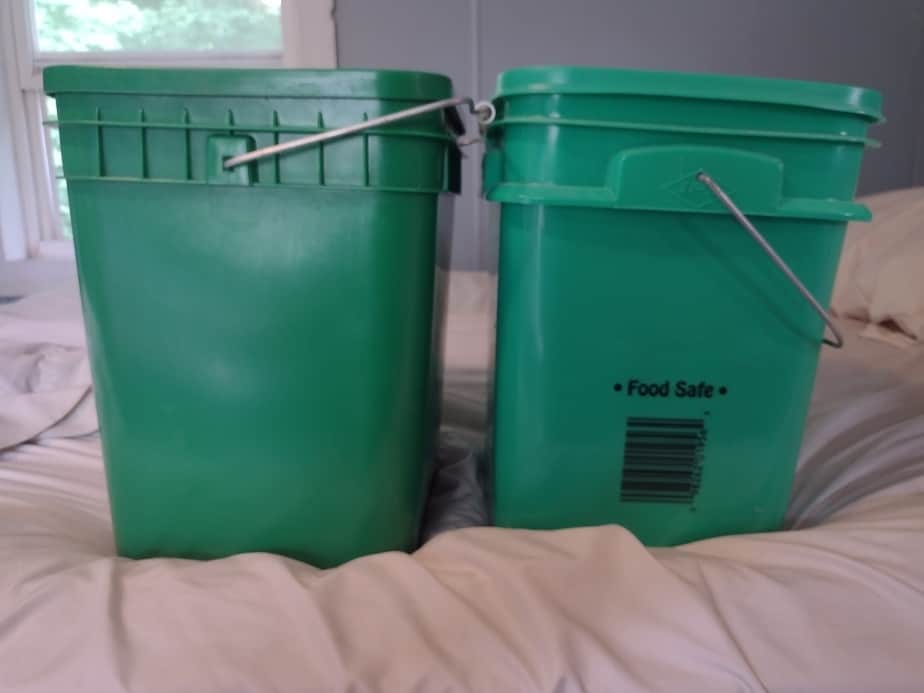Rice is the most common food in the world and if stored properly, can keep well for nearly half a century. Rice is perhaps the most essential grain for long-term food storage.
Rice should be stored in a cool, dry environment out of the sun and in a sealed container that mice and bugs can’t get through. Rice in mylar bags with an oxygen absorber and placed in airtight plastic buckets will last the longest. If kept under 50 degrees, white rice will last up to 50 years stored this way.
I have some tips on storage and on how much you should put up per person. Keep on reading for more info.
Why Store Rice?
Rice is a grain that is high in calories, and low in volatile compounds. That means it will not lose much nutrition during storage. It’s always smart to store some extra food. FEMA says to store at least 2 weeks worth of non-perishable food in the event of public emergencies.
Other authorities say to store up to 3 months worth of food per person. That’s quite a lot of food. Rice is one of the most shelf-stable high nutrition foods. It’s high in calories and moderately high in protein. a 5-gallon bucket of rice holds about 35 pounds, 80,000 calories and 1,200 grams of protein.
So, just how long does rice last before going bad?
- In the original package- 3 months to a year
- In original packaging, placed in an airtight bucket- 1 to 3 years
- Original packaging in airtight bucket with oxygen absorbers- 3 to 5 years
- Mylar bags with oxygen absorbers in airtight bucket– 10 to 30+ years

The variance there largely depends on the average temperature. High temperatures cause degradation at a much faster rate, so cool storage conditions are best. But, what’s bad rice? As rice ages, volatile compounds break down, mainly oils, and certain vitamins.
Oxygen absorbers and mylar make all the difference. We have a functional limit of about 30 years of storage time, just because that’s the longest anyone has stored food that way so far. In theory, the full storage method could prolong the shelf-life of rice indefinitely.
Even after it’s gone “bad” or rancid, it’s still safe to eat. It will just taste funky or stale. In agriculture, we often feed old grains to animals, and they aren’t stored very well. We generally figure up to a 10 percent reduction in nutrition after a grain has “gone bad”, mainly due to the loss of oil.
Old rice can taste stale after the natural oils have begun to evaporate or polymerize. that’s mainly an effect of oxygen. If you remove the oxygen, you can prolong its quality almost indefinitely. Cool temperatures slow down the atomic action of the molecules, lessening oxygen’s effect.
One cup of dry rice has about 13 grams of protein and 700 calories. That’s not bad for something that is self-stable. Rice can make up the bulk of the calorie intake of a person. Although, it doesn’t have adequate protein by itself. The simplest thing to add to rice for good protein is dry beans.
26 pounds of dry rice and 12 pounds of dry beans will feed an adult for a month with a mostly complete diet, containing all the calories and protein the average adult needs. If you mix them together, that just might all fit in a single 5-gallon bucket with a little shaking.
The rice will fill in gaps between the larger beans. That’s the 2,000 calories and 50 grams of protein per day recommended for an average adult and half that for a child.
By the way, a considerable amount of flour or cornmeal will fit in a pail of beans or grain without changing the volume stored inside. The smaller ground particles will settle in between the larger pieces. I used to dump a few pounds of cornmeal into a full can of oats when I went camping. Just a tip.

What Rice Should I Store?
White rice is the most popular because it is cheap. But, white rice is less nutritious than whole grain rice, also called brown or wild rice. It’s been dehulled and de-germed, which removes the part with the most fiber, protein, and vitamin content. Whole grains always have a better nutritional profile.
I do recommend brown rice over white rice. It’s simply more nutritious and has a lot higher vitamin content. It stores just as well too. It’s not important where you get it from. Most rice in the US is pretty high quality and will store well. Sometimes rice, and other beans and grains, contain some bugs.
Keeping Bugs Out of Rice.
The common ones are pantry moths and weevils. Both can come in rice from the field or packaging plant every once in a while. There are sometimes a few small eggs in rice that can lead to a full-fledged infestation. That gets nasty, I remember a few times like that as a kid.
The best way to eliminate any chance of bugs in your rice, or any other dry foods, is to freeze it for a week before storing it. That will kill any tiny eggs that happen to be in there. But, if you freeze dry food, you have to be sure it’s fully dried out before you store it away for good.
Removing frozen rice from the freezer caused condensation both inside and outside of the package. if you freeze rice, open the package, spread it thin, and let it dry for half an hour or so before sealing it up to prevent any mildew or mold from growing.
BUgs won’t get through a stout plastic container. Weevils could potentially chew through plastic buckets, but they don’t ever seem to. The pantry moth isn’t much of a chewing bug either. Well-sealed ziplock bags are usually enough to keep the bugs out, as long as there aren’t any holes in them.
For keeping out pests, and vermin, plastic buckets at least 70-mill thick are recommended. Food-grade buckets are a plus, but may not be needed depending on how you end up storing things in them. Mylar bags with oxygen absorbers, stacked inside a plastic bucket is the best way to store dry food.
The mylar bag will prevent oxygen, moisture, and bugs from getting into the food, and the bucket will keep mice out and prevent damage to the mylar bags. Putting an oxygen absorber in each mylar bag will keep the contents from oxidizing, giving 5-10 times the shelf life.

Best Buckets to Store Rice
The best buckets for long-term food storage are the 5-gallon round LifeLatch buckets from usplastics.com. They have the best seal, a durable lid, and are easy to open and close tightly. Another cheaper option is the square 4-gallon buckets they sell, but they don’t have an airtight seal.
The most important thing about buckets is that they need to be sturdy and the lid needs to be on tight so bugs and critters can’t get in. If you are storing bulk food lose in buckets, an airtight seal will help the food to last. Most food-grade buckets have a rubber gasket seal on the lid.
The LifeLatch buckets have a neoprene gasket, which seals better and lasts longer than rubber. That’s what I really like about them. The buckets with gamma lids are popular, and seal well, but can be hard to open if you have wrist problems.
How Much Food Should I Store?
FEMA recommends at least 2 weeks of non-perishable food, private experts recommend 3 months, and Utah State University recommends 1 year’s worth of food. I recommend in the area of 6 months as a good target. Grains should make up the bulk of that.
300 pounds of grain per person per year is a simple goal to store long-term emergency food. A mix of at least 4 different grains will help ensure more balanced nutrition. 150 pounds each of rice, corn, oats, and wheat would be a decent assortment. That’s approximately 1,800 calories a day.
That would be a conservative amount for a working adult. Now, that doesn’t include all the vitamins and minerals you need to stay healthy. It’s also low on protein. For a hard-working man, you’ll want to add a hundred pounds of dry beans, peas, or lentils to that to up the protein.
If you just need a place to start, go with some rice first. By two 5-gallon buckets and begin filling them with rice. Add a few pounds of rice from every paycheck and they will be filled in no time. After that, fill a bucket with beans. By the time you fill 4 buckets, you have over 120 pounds of dry, shelf-stable food.
Related articles

